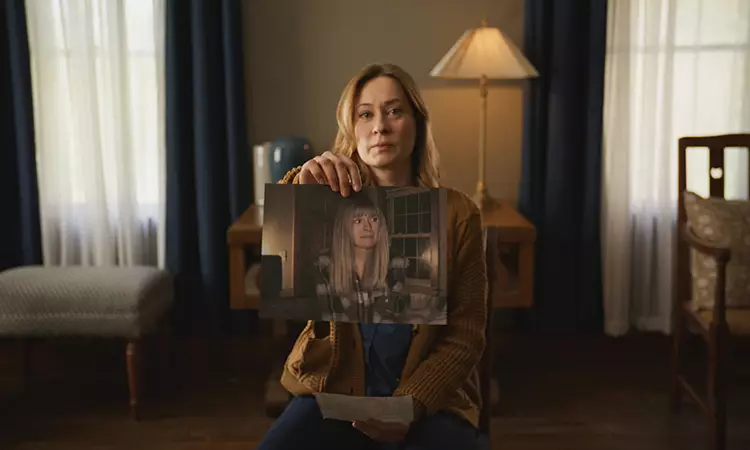In the realm of supernatural thrillers, *Shelby Oaks* stands out as an engaging tapestry woven with the threads of personal trauma, familial connections, and the inescapable specter of fear. The film opens with a haunting declaration from Riley Brennan, portrayed by Sarah Durn, who expresses her feelings of being watched. There’s a compelling irony in this moment; while we hear her voice echoing through the framework of the film, we find ourselves confronted with a blank screen, a deliberate choice that highlights the disconnection between the character’s visceral reality and the audience’s perception of her plight. This disjunction serves as a potent reminder of how mediated experiences, particularly in horror cinema, often obscure the true depths of emotional turmoil.
As the audience, we make our entry into Riley’s world through a painstakingly constructed narrative interspersed with found footage and documentary elements that blur the lines between past and present. The initial 17 minutes are meticulously crafted, offering glimpses into Riley’s last documented moments alongside her team—Peter, Laura, and David—as they delve into the eerie history surrounding the abandoned town of Shelby Oaks. Their investigation is not simply about uncovering the fate of the town’s inhabitants, abandoned in the 1990s, but also symbolizes a yearning to grasp the incomprehensible facets of human experience and memory.
The narrative escalates as the found footage is juxtaposed with Mia’s present-day investigation into her sister Riley’s disappearance, an emotional pursuit set against the backdrop of her struggles with familial relationships and motherhood aspirations. Mia, played by Camille Sullivan, becomes a vessel through which past hauntings resurface, manifesting sentiments of loss and longing. The film pivots from mere horror spectacle to a profound exploration of personal loss, with the intertwining of familial bonds and the gnawing dread of the unknown.
Through the juxtaposition of Riley’s documented struggles and Mia’s frantic search, the film delves into the nuances of trauma and grief. Mia’s descent into a nightmare is not only a psychological exploration but also an indictment of how unresolved familial issues can manifest in the most haunting of ways. The return to the abandoned town and its dilapidated attractions serves as a metaphorical landscape for Mia’s own emotional desolation, emphasizing that the horrors found within human connections can surpass those conjured by the supernatural.
Chris Stuckmann’s directorial approach pays homage to the classic horror films that have shaped the genre, from Polanski’s *Rosemary’s Baby* to Friedkin’s *The Exorcist*. These influences are evident in the film’s atmospheric tension, where the specter of the past looms large over present actions. The manipulation of various media forms, from digital obfuscations to layers of historical footage, creates an intricate web of storytelling that captures how the past continuously influences the present.
The narrative does not shy away from showcasing the disintegrating boundaries between truth and illusion. As viewers witness Riley’s enigmatic drawings of nightmarish visions come to life through Mia’s experiences, they are invited to question the reliability of perception. What emerges is a chilling sense that the characters are ensnared in a narrative predestined by forces beyond their comprehension, rendering their struggles both tragic and inevitable.
Confronting the Unknown: A Journey to the Abyss
Stuckmann’s film invites audiences into a labyrinth of fear, where the quest for truth becomes a terrifying encounter with the unknown. As Mia grapples with her sister’s legacy, she navigates through psychological depths and supernatural frights that challenge both her resolve and her perception of reality. The film’s portrayal of violence is not gratuitous but eerily poignant, reinforcing the idea that true horror often lies within the complexities of human relationships and personal histories.
In this atmospheric narrative, as truth slips through the cracks of understanding and reality becomes increasingly elusive, viewers are left pondering the limits of human perception and the extent to which our past defines us. In *Shelby Oaks*, the interplay of reality and fiction finds its most haunting expression, crafting a gripping tale of love, loss, and the inexorable pull of the unknown. Ultimately, what makes this film particularly resonant is its exploration of sisterly bonds—how they can be both nurturing and destructive, illustrating that in the face of fear, familial ties can either anchor us or drive us deeper into despair.

